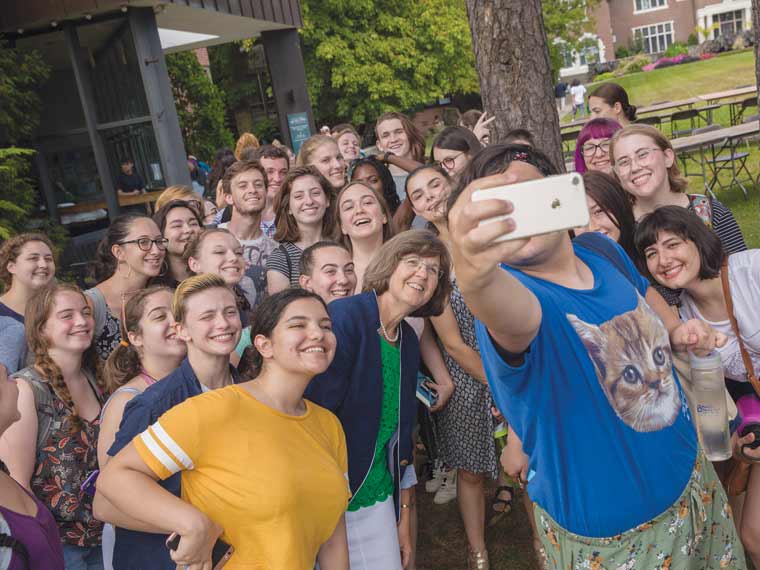
As I joined a table of students in Bates for lunch one Friday, a sleep-deprived group grabbing a bite between their morning lab and afternoon physics class animatedly described the project they had spent much of the previous night completing. The assignment, as I understood it, involved designing a Rube Goldberg-like machine. They were thrilled with the efficiency they had achieved, quite certain they would prevail in the informal competition among the groups in the class. However, they explained to me that they needed to eat quickly and get back to their work because, somehow, they had lost sight of aesthetics while building the project. Even though it more than satisfied the efficiency requirements of the assignment, their creation looked terrible. So they couldn’t stop. Their project wouldn’t be Sarah Lawrence worthy if they did that. This was not a mere cosmetic issue; it was fundamental to their sense of completing work to their standards.
In their hurried conversation, I learned that one was planning to pursue a PhD in chemistry, but also spent a lot of time in theatre. Another was focused on environmental science, but also worked at the Early Childhood Center. And another was working in digital media and math … You get the idea. They were full of boundless creativity and curiosity and, in that moment, recognized the value—indeed, the imperative—of bringing their diverse and collective experiences and expertise together to bear on the work in front of them. (And they added the lesson learned as they ran back to the lab: “Next time we’re not going to reverse-engineer what we should have known needed to be there from the start.”) Everything about that lunch was so Sarah Lawrence, indeed—Sarah Lawrence at our best.
That’s so Sarah Lawrence. … This phrase regularly crosses my mind as I spend time with students, talk with faculty about what they are teaching, watch performances and athletic events, and encounter our alumni in the world. This issue of the magazine brings that “so Sarah Lawrence” trait—immediately recognizable, but sometimes hard to quantify or pin down—to the fore in stories about the lives of students, faculty, and alumni.
When I speak with parents of prospective and current students, our conversations often turn to questions about life beyond Sarah Lawrence. We know that most, if not all, of our current students will change jobs many times over their lives. Indeed, over the course of their careers, many of our students will likely work in jobs that don’t presently exist. What better preparation for such a world than the educational opportunity Sarah Lawrence offers. By learning how to pose hard questions and creating an interdisciplinary path over four years with the assistance of a don and other faculty mentors, students leave the College prepared to create and recreate themselves many times over in ways they haven’t yet imagined.
So, enjoy reading about the ways Sarah Lawrence students, faculty, and alumni in this issue of the magazine have connected their wide-ranging passions as they have created lives of meaning. That’s so Sarah Lawrence!
Cristle Collins Judd
President
president@sarahlawrence.edu
Photo by Quyen Nguyen